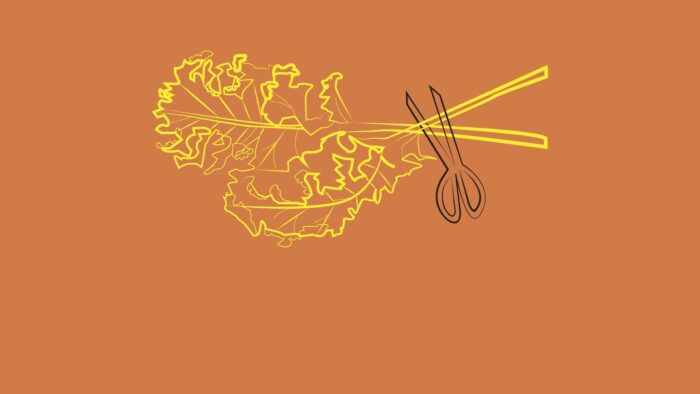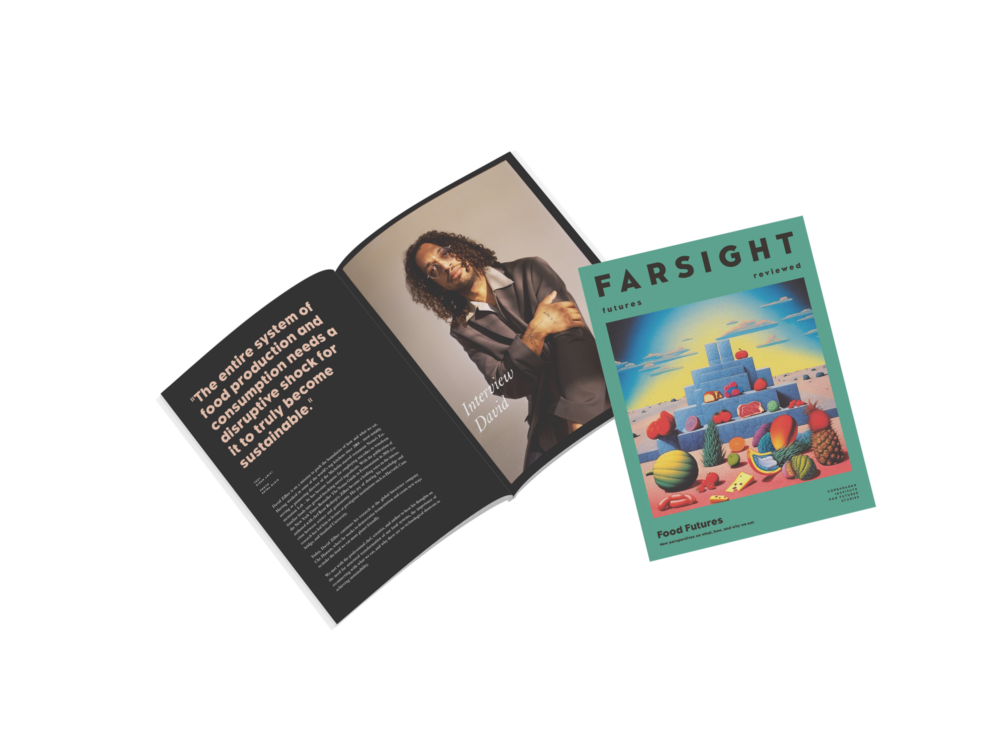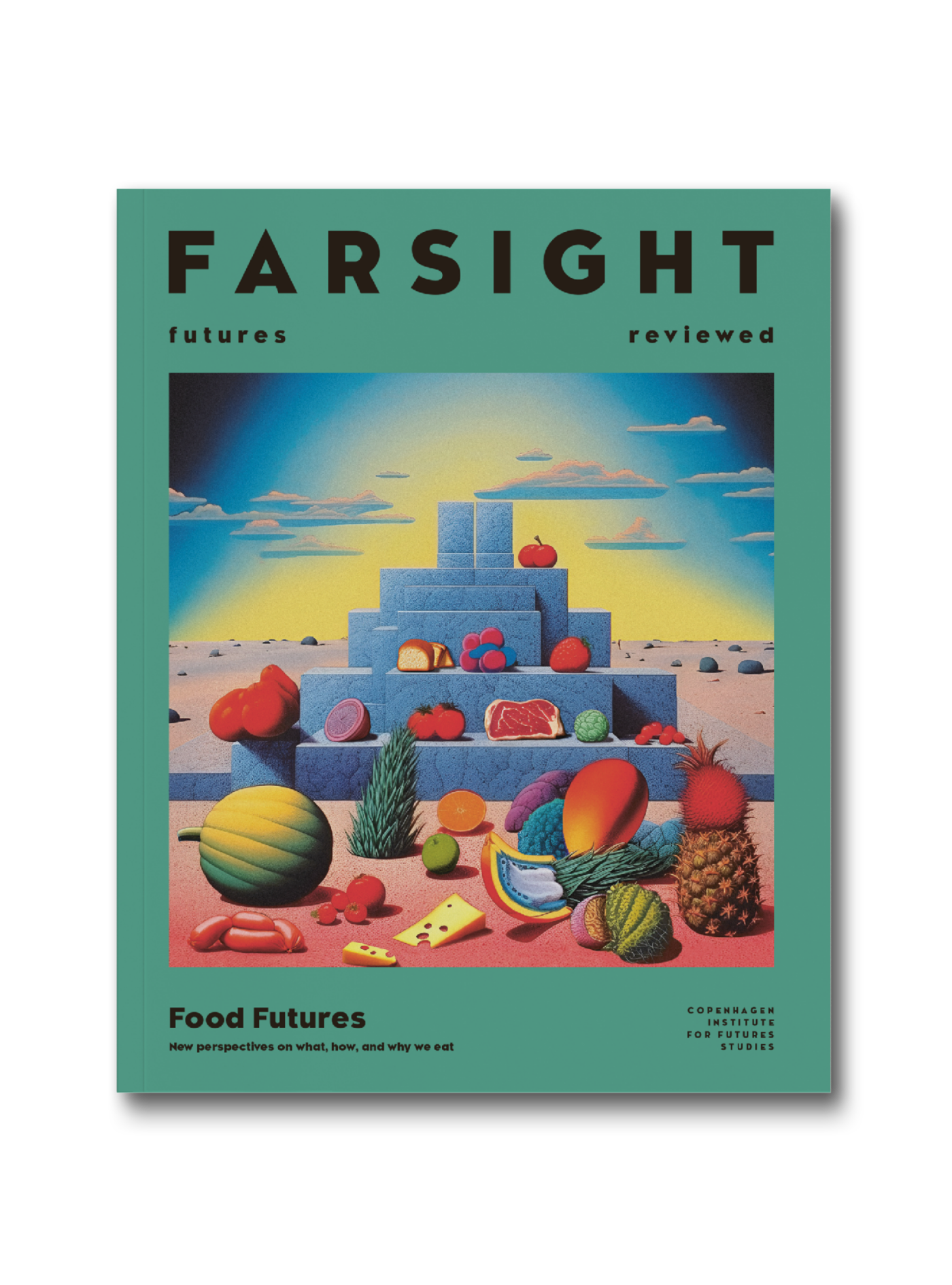
In turn, we use cookies to measure and obtain statistical data about the navigation of the users. You can configure and accept the use of the cookies, and modify your consent options, at any time.

Food With Thought
From lettuce ketchup to snail sausages, food designers are challenging culinary norms and changing the way we eat.
Illustration: Sophia Prieto
“It is,” says Carolien Niebling, “an incredible piece of design. It’s this historic, self-contained parcel that can be made on an industrial scale or on a much more domestic scale. It’s a strongly local product – there are dozens of variations around the world – but it’s also preservable, which has allowed it to travel and thereby play a part in the development of human civilisation. It’s also super-efficient. There’s very little waste in the way it’s put together. But it’s also ripe for change.”
Niebling is a product designer, so one might expect her to enthuse about examples of impressive ergonomic efficiency. But here she isn’t speaking of a chair, or a piece of tech. She’s talking about the sausage. Niebling, author of the intriguingly titled The Sausage of the Future and a forthcoming book with MIT on food textures, focuses on the design of food.
“There’s a tendency to think about food design as food styling, or food packaging,” explains Niebling, who showed a display on the beauty of edible seaweeds at the recent Salone del Mobile design exhibition. “But actual foodstuffs are designed too. The problem is that with too many of its products, the food industry tends to follow trends rather than create them.”

Broaden your horizons with a Futures Membership. Stay updated on key trends and developments through receiving quarterly issues of FARSIGHT, live Futures Seminars with futurists, training, and discounts on our courses.
become a futures memberNiebling is among the leading practitioners of the young discipline of food design who are out to put this right – to create foods that respond to changing societal needs or provide a new benefit. It’s a growth sector too. This discipline has recently seen the University of Reims launch a ‘design culinaire’ course, while the Italian Food Genius Academy has opened its third ‘food innovation’ school, in Shanghai.
“I still have difficulty in explaining what I do because this isn’t product design. It’s more about getting in front of the processes, and using intuition and understanding of the changes in how we live, in order to develop new products,” explains food designer Annelies Hermsen. “It’s about bringing two sides together: the food producers who often find it hard to match their product type to changing consumer needs, not because they’re resistant to change, but because of the inflexibility of their processes. And consumers who can be reluctant to explore new ideas in food. It’s about encouraging both to be more speculative.”
That’s because, as she explains, humans are deeply accustomed to lean into defined ideas as to what constitutes food and what doesn’t. When Hermsen recently experimented with a bone broth made from male goat (typically discarded by the goat milk industry), her test subjects said they liked the flavour, but admitted they would nonetheless buy a chicken or beef broth in preference.
It’s an example of just how hard it is for new ideas to bed in. Just 12 crops and five animal species account for 75% of our global food intake, meaning that the possible culinary world has barely been explored at all. Unless consumers buy into a novel foodstuff quickly, manufacturers struggle to justify the longer-term investment and instead just move on to the next idea.
Some ideas do stick: rolled ice cream, bubble teas, cronuts, ruby chocolate, nut milks, protein-packed or activated charcoal foods and drinks, lab-grown meats and soy-based meat substitutes. All these products were largely unheard of just a few years ago but have responded to shifts towards more functional, healthy, and ethical eating. Food too has become an expression of identity: it’s food as fashion accessory. Food design is responding to the fact that we’re more mobile, so eat on the move more often; that we’re seeing work and leisure blur, so may have less time to prepare food; and also that we’re an aging population who may need foods that are easier to eat or are more digestible.
More recent proposals – some more challenging than others – include the likes of lettuce ketchup, cabbage marshmallows, fruit made chewy or reconstituted as aspic-like blocks for easier portability, and snail sausages. Given the huge problem of food waste, other ideas repurpose as foods what has typically been considered disposable, such as the stems of oyster mushrooms. Others use tech to invent entirely new foods: Bezalel Academy of Design graduate Meydan Levy has proposed ‘neo-fruits’, 3D printed skins made of cellulose and then injected with vitamin and mineral-enriched liquids. Or Carnegie Mellon University’s Morphing Matter Lab’s experiments with the transformable quality of flat-packed pasta, because the shape of a food determines, in part, the energy required to cook it.
Our acceptance of new foods and our ability to grow beyond deeply ingrained behaviours will, argues Marije Vogelzang, increasingly require understanding our relationship to food at a more fundamental level. Vogelzang, who is the founder of the Dutch Institute of Food Design and author of Lick It (BIS Publishers), thinks of herself as being what she calls an “eating designer.” Her work explores how we interact with food at the moment of consuming it. A recent experiment saw her dye cubes of different vegetable matter black and stimulate her test subject’s olfactory sense while they ate them: how did colour (or lack of) shape our perception of the food? Could a synesthetic response be prompted?
“It’s not just foods like gummy bears or Cup Noodles that have been designed. Agriculture has been a process of design too. Tomatoes are not naturally as red as we think of them being, for example,” argues Vogelzang. She has, among many other recent proposals, suggested the concept of ‘vegetable animals’ to allow us to reconsider meat substitutes more positively as their own category, rather than as second-class alternatives to real (if usually highly processed) meat.
“But it’s incredible how under-explored the potential of design in food has been so far, given how it can make us consider what and how we eat,” she adds. “Often what we eat is highly irrational for reasons cultural and even political. There’s a lot of work to be done to help people think about foods outside of the established framework.”
Edouard Malbois, of the Paris-based food design agency Enivrance, which has worked on concept foods for the likes of Lavazza, Nestlé and McDonald’s, agrees: in order to get the wealth of food we could have, food design needs to help the industry rethink food production at a systemic level. He thinks the food industry is somewhat stuck in the mindset of producing ‘alternatives’ to established foodstuffs, but not yet focused on producing new and better foods.
“The industry is stuck using the same production methods, with the same over-production,” says Malbois, who launched his own innovation, Grand Jardin, cold infused exotic teas served from wine-style bottles in wine glasses, in May 2023. “It’s true that the models of the food industry don’t change easily, but food design has to lead the way in thinking anew about what we invest in food, the way we make it, and what we expect from it.

This is an article from
FARSIGHT: Food Futures
Grab a copy here